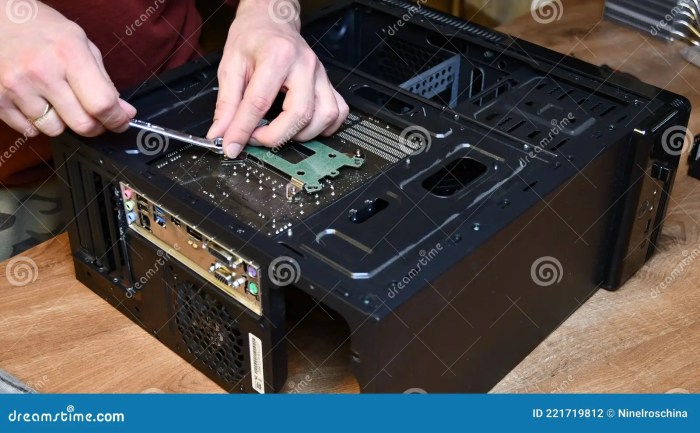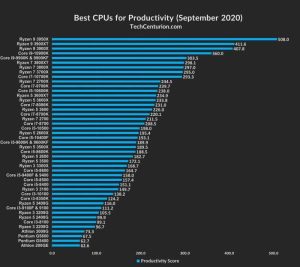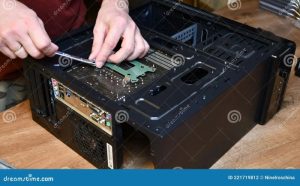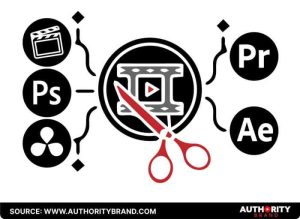
DIY computer hardware assembly sets the stage for this enthralling narrative, offering readers a glimpse into a story that is rich in detail with entertaining interactive style and brimming with originality from the outset.
Embark on a journey to learn the ins and outs of assembling computer hardware components from scratch, understanding the role of electronics and electrical components, troubleshooting common issues, exploring data communication, diving into graphics and multimedia capabilities, and staying updated on the latest trends in computer hardware technology.
DIY Computer Hardware Assembly

Assembling computer hardware components can be a rewarding experience, allowing you to customize your system according to your needs and preferences. It is essential to handle and install hardware components properly to ensure the optimal performance and longevity of your computer.
Step-by-Step Guide
Here is a step-by-step guide on how to assemble a computer from scratch:
- Prepare the components: Gather all the necessary hardware components such as the motherboard, CPU, RAM, GPU, storage devices, power supply, and cooling system.
- Install the CPU: Carefully place the CPU into the motherboard socket, ensuring proper alignment and gently securing it in place.
- Install the RAM: Insert the RAM modules into the corresponding slots on the motherboard, applying even pressure until they click into place.
- Mount the motherboard: Secure the motherboard onto the case using standoffs to prevent it from touching the metal surface.
- Connect power supply: Attach the necessary power cables from the power supply unit to the motherboard, CPU, GPU, and other components.
- Install storage devices: Connect the storage devices such as SSDs or HDDs to the motherboard using SATA cables.
- Install the GPU: Insert the GPU into the PCIe slot on the motherboard and secure it with screws.
- Connect peripherals: Attach peripherals such as the monitor, keyboard, and mouse to the appropriate ports on the motherboard.
- Power up the system: Connect the power cord to the power supply unit and press the power button to boot up the computer.
Importance of Proper Handling and Installation
Proper handling and installation of hardware components are crucial for the following reasons:
- Prevent damage: Improper handling can lead to damage to delicate components such as the CPU or GPU, affecting the overall performance of the system.
- Ensure stability: Securely installing components like the motherboard and GPU prevents them from shifting or coming loose during operation, ensuring stability.
- Optimize performance: Proper installation of hardware components allows for efficient airflow and cooling, optimizing the performance of the system.
- Extend lifespan: Correctly installed hardware components are less likely to fail prematurely, extending the lifespan of your computer.
Electronics and Electrical in Computer Hardware
When it comes to assembling computer hardware, understanding the role of electronics and electrical components is crucial. Electronics play a vital role in ensuring the proper functioning of hardware components, while electrical considerations are key in selecting and installing the right parts.
The Role of Electronics in Computer Hardware Assembly
Electronics encompass the circuitry and components that enable the computer to process data and perform tasks. In hardware assembly, it is essential to correctly connect and integrate these electronic components to ensure the computer functions as intended.
Significance of Understanding Electrical Components
- Understanding electrical components such as resistors, capacitors, and diodes is important as they regulate voltage and current flow within the computer.
- Knowledge of electrical components helps prevent issues like short circuits or power surges that could damage the hardware.
- Proper understanding of electrical components ensures efficient power distribution and overall system stability.
Electrical Considerations in Hardware Selection and Installation
- When selecting hardware components, factors like power requirements, voltage compatibility, and connector types should be considered to ensure compatibility with the system.
- During installation, attention should be paid to proper grounding, cable management, and power supply connections to prevent electrical issues.
- Electrical considerations also impact the cooling system setup to prevent overheating and maintain optimal performance.
Computer Repair and Consulting
When assembling computer hardware on your own, it’s important to be prepared for potential hardware issues that may arise. Here are some common problems that DIY assemblers may encounter and troubleshooting tips to help resolve them.
Common Hardware Issues and Troubleshooting
- Problem: Computer not turning on.
- Troubleshooting Tip: Check power supply connections, ensure the power switch is on, and test the power outlet.
- Problem: Blue screen of death (BSOD).
- Troubleshooting Tip: Check for incompatible hardware or drivers, run a memory test, and update drivers.
- Problem: Overheating.
- Troubleshooting Tip: Ensure proper airflow in the case, clean dust from fans and heatsinks, and consider adding additional cooling solutions.
- Problem: No display on monitor.
- Troubleshooting Tip: Check monitor connections, test with a different monitor or cable, and verify GPU is properly seated.
When to Seek Professional Help
- If you’ve exhausted all troubleshooting steps and the issue persists, it may be time to seek professional computer repair and consulting services.
- Professional technicians have the expertise and tools to diagnose and repair complex hardware problems efficiently.
- Additionally, if you’re unsure about handling a particular hardware issue or lack the necessary skills, it’s best to consult with a professional to avoid causing further damage.
Data Communication in Computer Hardware
Data communication within computer hardware components is essential for the transfer of information between different parts of a computer system. This communication process involves the exchange of data signals through various pathways, such as buses, ports, and connectors, allowing for seamless interaction between components.
Importance of Data Transfer Speeds in Hardware Selection
- Data transfer speeds play a crucial role in hardware selection as they determine how quickly information can be transmitted between components.
- High-speed data transfer is especially important for tasks that require large amounts of data to be processed quickly, such as gaming, video editing, and data analysis.
- Choosing hardware with faster data transfer speeds can significantly improve overall system performance and efficiency.
- Factors like the type of processor, memory, storage devices, and connectivity options can all impact data transfer speeds and should be considered when selecting computer hardware components.
Advancements in Data Communication Technologies Impacting Computer Hardware Assembly
- Advancements in technologies like USB 3.0, Thunderbolt, and PCIe have revolutionized data communication in computer hardware, enabling faster and more efficient data transfer rates.
- Wireless communication protocols like Wi-Fi 6 and Bluetooth 5.0 have also improved connectivity options, reducing the reliance on physical cables for data transfer.
- Emerging technologies such as NVMe (Non-Volatile Memory Express) for SSDs and 5G cellular connectivity are pushing the boundaries of data communication speeds, enhancing the performance of computer systems.
- These advancements in data communication technologies continue to drive innovation in computer hardware assembly, providing users with faster, more reliable, and seamless data transfer capabilities.
Computers E-Books
E-books play a crucial role in learning about computer hardware assembly as they provide detailed guides, step-by-step instructions, and visuals to help users understand the process effectively. They are convenient, easily accessible, and often cost-effective compared to traditional printed books.
Recommended E-Books for Computer Hardware Assembly
- “Building the Perfect PC” by Robert Bruce Thompson and Barbara Fritchman Thompson – This e-book offers comprehensive guides on selecting components, assembling hardware, and troubleshooting common issues.
- “Upgrading and Repairing PCs” by Scott Mueller – A go-to resource for DIY enthusiasts, this e-book covers a wide range of topics related to computer hardware assembly, upgrades, and repairs.
- “The Hardware Hacker: Adventures in Making and Breaking Hardware” by Andrew ‘bunnie’ Huang – This e-book provides a unique perspective on hardware hacking, exploring creative ways to modify and assemble computer components.
Benefits of Using E-Books for DIY Computer Hardware Assembly
- Easily Accessible: E-books can be downloaded instantly, allowing users to access information on computer hardware assembly anytime, anywhere.
- Interactive Content: Many e-books include interactive elements such as videos, images, and links to resources, enhancing the learning experience.
- Cost-Effective: E-books are often more affordable than printed books, making them a budget-friendly option for individuals looking to learn about computer hardware assembly.
- Up-to-Date Information: E-books can be updated regularly to reflect changes in technology and hardware components, ensuring users have access to the latest information.
Graphics and Multimedia in Computer Hardware
When it comes to achieving optimal graphics and multimedia performance on your computer, the hardware you choose plays a crucial role. From the graphics card to the monitor, each component contributes to the overall quality of visuals and sound. Let’s delve into the hardware requirements for top-notch graphics and multimedia experience.
Hardware Requirements for Optimal Graphics and Multimedia Performance
To ensure smooth and high-quality graphics and multimedia output, you need to pay attention to the following hardware components:
- Graphics Card: A dedicated graphics card with ample VRAM is essential for rendering complex visuals and processing multimedia content efficiently.
- Processor: A powerful CPU is necessary to handle the calculations and computations required for graphics rendering and multimedia playback.
- RAM: Sufficient RAM is crucial for storing temporary data and facilitating smooth multitasking when dealing with graphics-intensive applications.
- Monitor: A high-resolution monitor with good color accuracy and refresh rate is essential for displaying graphics and multimedia content in all its glory.
- Sound Card: For immersive multimedia experience, a high-quality sound card can enhance audio output and provide surround sound capabilities.
How Hardware Assembly Impacts Graphics and Multimedia Output
The way you assemble your computer hardware can have a significant impact on the quality of graphics and multimedia output. Proper installation and configuration of components ensure optimal performance and prevent bottlenecks that may hinder the display of graphics or playback of multimedia content.
Advancements in Graphics and Multimedia Hardware
With advancements in technology, graphics and multimedia hardware have evolved to provide better performance and enhanced features. From ray tracing in graphics cards to 4K resolution monitors, DIY computer assemblers have access to cutting-edge hardware that can elevate their graphics and multimedia experience to new heights.
Computers Hardware

When it comes to computer hardware, there are a plethora of components available in the market to choose from. From processors to graphics cards, each piece plays a vital role in the overall performance of your system. In this section, we will compare different types of computer hardware components, discuss compatibility considerations, and explore the latest trends in technology that influence assembly choices.
Types of Computer Hardware Components
- Central Processing Unit (CPU): Known as the brain of the computer, this component executes instructions and performs calculations.
- Graphics Processing Unit (GPU): Responsible for rendering images and videos, crucial for gaming and graphic design.
- Random Access Memory (RAM): Temporarily stores data for quick access by the CPU, enhancing multitasking capabilities.
- Storage Drives (HDD, SSD): Store operating systems, applications, and personal files, with SSDs offering faster read/write speeds than traditional HDDs.
- Motherboard: Connects and communicates between various components, providing power and data transfer.
- Power Supply Unit (PSU): Supplies power to all components, ensuring stable and consistent operation.
- Cooling System: Prevents overheating by dissipating heat generated by components, crucial for maintaining performance and longevity.
Compatibility Considerations
- Socket Type: Ensure the CPU socket on the motherboard matches the processor you intend to use.
- Form Factor: Check that the motherboard form factor aligns with the case size for proper fitment.
- Memory Type: Verify that the RAM modules are compatible with the motherboard’s memory slots and supported frequencies.
- Power Requirements: Choose a PSU with sufficient wattage to power all components, factoring in future upgrades.
Latest Trends in Computer Hardware Technology
- Increased Core Counts: CPUs now feature more cores for improved multitasking and performance in demanding applications.
- NVMe SSDs: Non-volatile memory express (NVMe) SSDs offer lightning-fast read/write speeds, enhancing system responsiveness.
- Ray Tracing Technology: GPUs with ray tracing capabilities deliver realistic lighting effects in games and applications.
- Wireless Connectivity: Wi-Fi 6 and Bluetooth 5.0 support provide faster and more reliable wireless connections.
Final Conclusion
As you reach the end of this DIY computer hardware assembly adventure, you are now equipped with the knowledge and skills to confidently tackle building your own PC with finesse. Whether you’re a novice or a seasoned DIY enthusiast, the world of computer hardware assembly is yours to explore and conquer.
Commonly Asked Questions
How important is proper handling of hardware components during assembly?
Proper handling is crucial to prevent damage and ensure optimal performance of your computer.
When should I consider seeking professional computer repair services?
If you encounter complex hardware issues or feel unsure about troubleshooting, it’s advisable to consult a professional.
What role do e-books play in learning about computer hardware assembly?
E-books offer comprehensive guides and in-depth knowledge for DIY enthusiasts looking to enhance their skills in hardware assembly.





